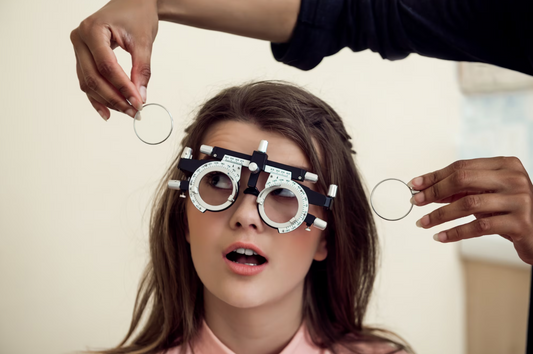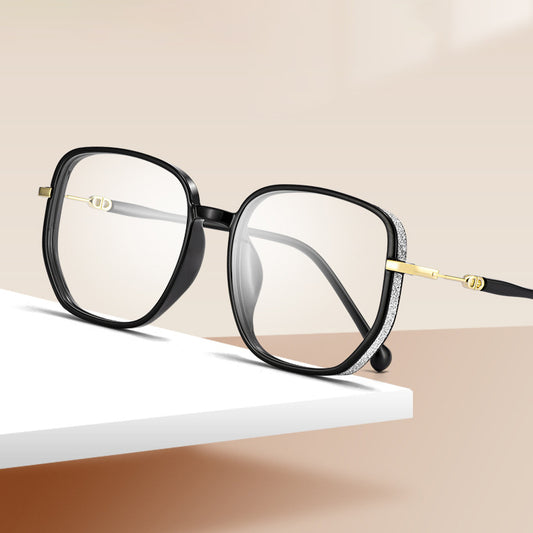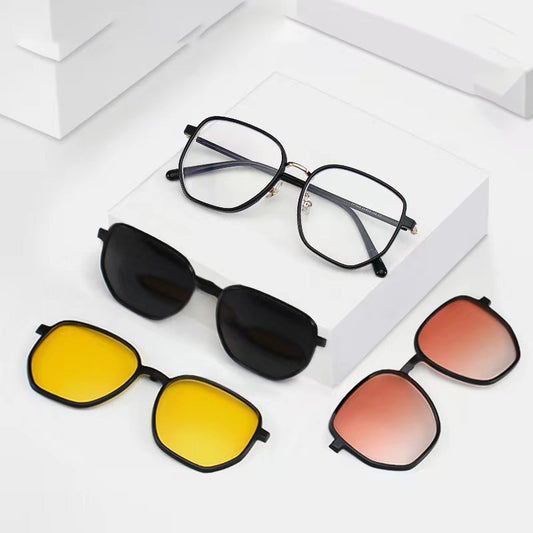Nearsightedness and farsightedness are two common vision problems that affect people of all ages. While they may seem similar, they are actually quite different in terms of causes, symptoms, and treatment options.
Nearsightedness (Myopia)
Nearsightedness, also known as myopia, is a common vision problem that affects people of all ages. It is a refractive error that causes difficulty in seeing distant objects clearly. In this condition, the eyeball is too long or the cornea is too curved, causing light to focus in front of the retina instead of on it. This results in blurred vision when looking at distant objects.
Causes of Nearsightedness
The exact cause of nearsightedness is not known, but it is believed to be a combination of genetic and environmental factors. If one or both parents have nearsightedness, the child is at a higher risk of developing it. Environmental factors such as spending too much time on close-up work like reading or using electronic devices can also contribute to the development of nearsightedness.
Symptoms of Nearsightedness
The most common symptom of nearsightedness is difficulty seeing distant objects clearly. Other symptoms may include:
- Squinting to see distant objects
- Headaches
- Eye strain
- Fatigue
- Blurred vision
Treatment Options for Nearsightedness
There are several treatment options for nearsightedness, including:
- Eyeglasses or contact lenses: These can help correct the refractive error and improve vision.
- Orthokeratology: This involves wearing special contact lenses overnight to reshape the cornea and improve vision during the day.
- Refractive surgery: This includes LASIK, PRK, and other surgical procedures that permanently reshape the cornea to improve vision.
Farsightedness (Hyperopia)
Farsightedness, also known as hyperopia, is a common vision problem that affects people of all ages. It is a refractive error that causes difficulty in seeing close-up objects clearly. In this condition, the eyeball is too short or the cornea is too flat, causing light to focus behind the retina instead of on it. This results in blurred vision when looking at close-up objects.
Causes of Farsightedness
The exact cause of farsightedness is not known, but it is believed to be a combination of genetic and environmental factors. If one or both parents have farsightedness, the child is at a higher risk of developing it. Environmental factors such as spending too much time on close-up work like reading or using electronic devices can also contribute to the development of farsightedness.
Symptoms of Farsightedness
The most common symptom of farsightedness is difficulty seeing close-up objects clearly. Other symptoms may include:
- Eye strain
- Headaches
- Blurred vision
- Fatigue
- Squinting
Treatment Options for Farsightedness
There are several treatment options for farsightedness, including:
- Eyeglasses or contact lenses: These can help correct the refractive error and improve vision.
- Refractive surgery: This includes LASIK, PRK, and other surgical procedures that permanently reshape the cornea to improve vision.
Differences between Nearsightedness and Farsightedness
While nearsightedness and farsightedness are both refractive errors, they are quite different in terms of causes, symptoms, and treatment options. The table below summarizes the differences between nearsightedness and farsightedness.
| Nearsightedness | Farsightedness | |
|---|---|---|
| Causes | Eyeball too long or cornea too curved | Eyeball too short or cornea too flat |
| Symptoms | Difficulty seeing distant objects clearly | Difficulty seeing close-up objects clearly |
| Treatment Options | Eyeglasses, contact lenses, orthokeratology, refractive surgery | Eyeglasses, contact lenses, refractive surgery |
How are Nearsightedness and Farsightedness Diagnosed?
Nearsightedness and farsightedness are diagnosed through a comprehensive eye exam. During the exam, the eye doctor will measure the refractive error of each eye and determine the best course of treatment.
Comprehensive Eye Exam
A comprehensive eye exam may include the following tests:
- Visual acuity test: This measures how well you can see at various distances.
- Refraction test: This determines the exact prescription for eyeglasses or contact lenses.
- Eye movement test: This evaluates how well your eyes move and work together.
- Eye pressure test: This measures the pressure inside the eye.
- Retinal exam: This examines the back of the eye to check for any abnormalities.
Prevention of Nearsightedness and Farsightedness
While nearsightedness and farsightedness cannot be prevented, there are steps you can take to reduce your risk of developing them. These include:
- Taking breaks from close-up work like reading or using electronic devices.
- Spending more time outdoors.
- Having regular eye exams.
Conclusion
Nearsightedness and farsightedness are two common vision problems that affect people of all ages. While they may seem similar, they are actually quite different in terms of causes, symptoms, and treatment options. If you are experiencing any vision problems, it is important to schedule a comprehensive eye exam with an eye doctor. They can diagnose any refractive errors and recommend the best course of treatment for your individual needs. Remember to take breaks from close-up work, spend time outdoors, and have regular eye exams to help reduce your risk of developing nearsightedness or farsightedness. With proper care and treatment, you can maintain good vision and enjoy a healthy life.








